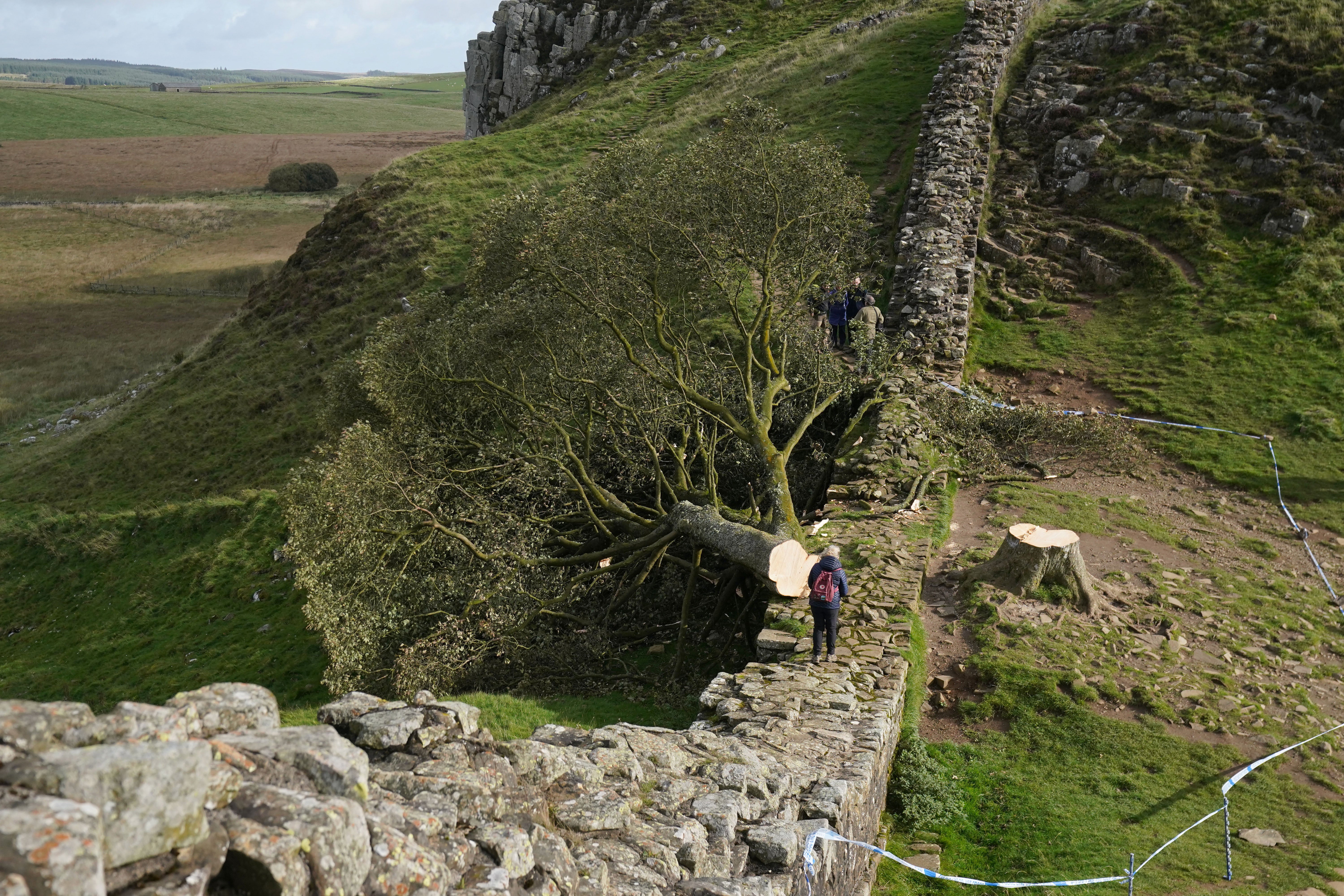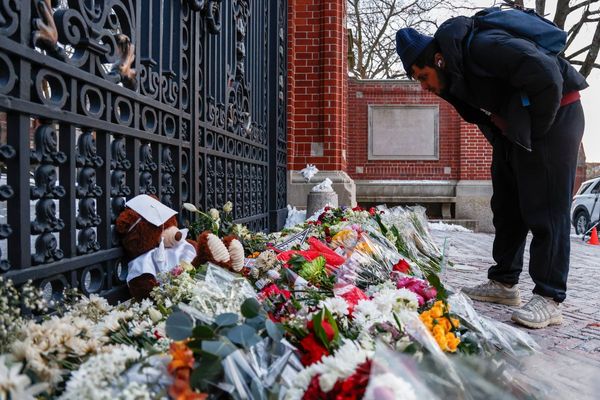So, vandals Daniel Graham and Adam Carruthers have been jailed at Newcastle Crown Court for more than four years for criminal damage after their “moronic mission” to chop down the beloved Sycamore Gap tree at Hadrian’s Wall two years ago. I’ll go out on a limb, here: it’s exactly what they deserved.
The tree, which was a striking symbol of Northumberland, a touchstone of British tourism and even featured in the Kevin Costner and Morgan Freeman film, Robin Hood: Prince of Thieves, was chopped down in just three minutes in the early hours of 28 September, 2023 – and recorded on the perpetrators’ mobile phones.
Carruthers’ lawyer told the court his client had done it in a moment of “no more than drunken stupidity” and said it was “something he will regret for rest of his life”.
I’ll say. So will we.

That’s because the wanton destruction of the ancient 150-year-old sycamore was more than “just” the desecration of a living, breathing thing (and that would, of course, have been enough). It shocked us all – even those who, like me, had never had the chance to see the famous tree in the flesh – and prompted an outpouring of very real, very impassioned public grief from everyone from celebrities to politicians, environmentalists to campaigners and nature charities.
Commentators, artists and tourists alike shared poignant anecdotes: of scattering the ashes of loved ones at its roots, of taking multiple generations to visit and marvel at its splendour, of marking memorable moments – weddings, funerals, birthdays – beneath its boughs. Some talked of a near-religious experience, gazing up into its vast canopy. Since its destruction, sculptor Charlie Whinney has created a place for people to sit beside and touch a section of the much-loved tree.

As for why the loss of the tree made such a dent on our collective consciousness, I can only hazard that it was partly, at least, because it was a piece of history; a hallmark of our cultural landscape. But I also think it is more than that. And it’s something entirely unique and specific to British woodland.
Recently, on my local neighbourhood WhatsApp group, someone posted a picture of an over-zealous council decision to chop down a French Tamarisk tree on a public pavement. Immediately, people sent broken heart emojis, a virtual outpouring of tears and shocked faces. Older locals started sharing their memories of the tree that had been there since their childhoods: “I feel really sad,” one said. “I remember that blossom tree from when I was a little girl”; and others said they were already in the process of emailing the council, councillors and the local MP.
It also galvanised suspicion: “I saw them doing it and thought they were pruning,” one person reported. “I asked them why they chopped the blossom tree down by our back gate and they told me it was dead, which it clearly wasn’t”; allegations of wrongdoing: “I smell corruption!” one neighbour said. “Human – not the trees!”; and an element of vigilante protectionism: “We need to photograph the ones on the estate to protect them too! It is my understanding that due to the size of the trunk and this being a conservation area, a planning application should have been submitted to remove the tree, so we should check on the planning portal to see if this was done.”
But, why? What is the significance of the Sycamore Gap (and of British trees more widely) – and why does felling stoke such fierce and emotional reaction?
According to Colin Tudge, author of The Secret Life of Trees, there are lessons to be learned from our own reactions to the Sycamore Gap. And he hopes now that some good can come of this senseless act of violence.
“Maybe its destruction will serve as a pivotal moment, when people born and brought up in this ultra-materialist, ultra-competitive, exclusively anthropocentric age finally undergo the mind shift that’s needed if we, humanity, are ever going to save what’s left of the natural world – and live in harmony with our fellow creatures,” he said.
“If we changed our attitude then we, humanity, could realistically be looking forward to the next million years, for starters.”
Tudge believes that the climate crisis can provide us with a stark framework to consider what is most important to us in the natural world.
“That we are now staring Armageddon in the face is not only tragic – it is absurd,” he says. “We can learn much of what we need to know from trees – far more and of far greater profundity than we ever can from politicians and their thinktanks of lawyers and financiers who set the tone of modern society and run our lives.
“We can learn first of all that we are not the only creatures that matter – we’re only one of an estimated eight million species, of which for all our efforts over thousands of years we have so far recorded less than a quarter, and we should not presume to strive for “dominion” over the rest as we were enjoined to do in Genesis (1:26).
“More: we can learn that although all individuals matter – as we feel when one that we love is destroyed – no individual, whether human or arboreal, truly exists (or can be said to be real) in isolation. John Donne’s observation that “No man is an island” is true of all creatures, and indeed of everything.”
Tudge points out that ecologists tell us that each and every apparently individual creature is an ecosystem in its own right. “Our own guts and outer surfaces harbour trillions of microbes that are essential for sound nutrition and general wellbeing,” he says. “Each of us is a walking ecosystem. And every tree that is not drenched in pesticide harbours scores or thousands of different species of invertebrates, which in turn are food for many more creatures of all kinds.”
And for those who don’t understand that trees are in constant “conversation” with each other: “All trees form symbiotic relationships with many kinds of mycorrhizal fungi in their roots whose hyphae spread far and wide, and increase their range and versatility,” he said. “Together, the fungal threads form a network of indefinite extent that brings all the trees of all species in a wood into communion with all the others.
“So they share water and nutrients – and also, crucially, share information. Each is aware of the plight of the others. Overall, indeed, the more we observe the natural world the more we see that nature as a whole is essentially both cooperative and communicative. Perhaps this once magnificent tree, reduced overnight to lumber, might become a symbol of a new enlightenment.”
Colin Tudge is the author of ‘The Secret Life of Trees’ (Penguin 2005) and most recently of ‘The Great Re-Think’ (Pari Publishing, 2021). He now runs a website: www.colintudge.com







